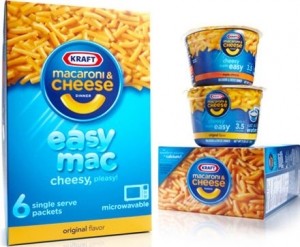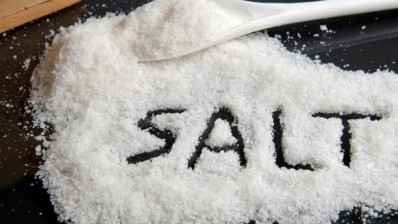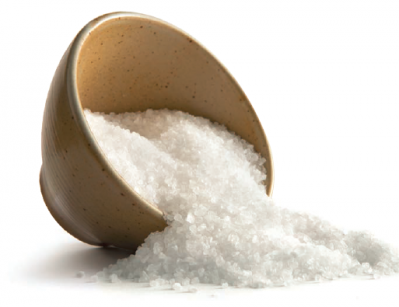Special edition: Sodium reduction - The road ahead
Should the FDA mandate sodium reduction targets, or are voluntary approaches working?

As we reported earlier today, new research suggest that despite the efforts of some of the nation’s leading food manufacturers to reduce sodium, average intakes (3,500mg/day) remain way above the maximum levels recommended in the Dietary Guidelines for Americans (2,300mg - or 1,500mg for at risk groups).
So is the answer setting mandatory targets (modifying the GRAS status of salt in different foods) to force firms to find more creative solutions (or at least force companies that have not made much progress on sodium reduction to catch up with those that have)?
Or should the government butt out and leave industry experts to find their own way forward?
Not surprisingly, food manufacturers are arguing for a voluntary approach, while the Institute of Medicine (IOM), the Center for Science in the Public Interest (CSPI) and the American Heart Association say government intervention is the only way to level the playing field and push everyone to follow industry best practice.
IOM report proposes radical action

In 2010, an IOM committee produced a major report called ‘Strategies to Reduce Sodium Intake in the United States’.
This proposed radical action, notably that the FDA should modify the GRAS status of salt and other sodium-based compounds by changing the level at which their use is considered safe, and change the daily value for sodium from 2,400mg to 1,500mg.
FDA: Considering voluntary targets for sodium reduction in foods
A year later, the FDA asked for comments on sodium reduction strategies (click here), but has not followed up with any clear recommendations since.
Asked by FoodNavigator-USA whether it is considering setting mandatory targets, the agency said it will "continue to work with industry and other stakeholders to promote gradual, achievable and sustainable reductions of sodium intake over time".
A spokesman added: “We are looking for ways to support sodium reduction and are considering possibilities such as voluntary targets for sodium reduction in foods.”
Prof Cohen: Washington is a place where a lot of good ideas go to die

But three years after the publication of the IOM report, “nothing has really changed”, claimed committee member Marsha N. Cohen, professor of law at the Hastings College of the Law, University of California.
“There was significant interest in the report when it came out, but we all know that Washington is a place where a lot of good ideas go to die.”
Leading CPG firms have cut out hundreds of tons of salt from major brands, often at great expense, she acknowledged. However, the only way to ensure best practice is shared across the industry is to level the playing field.
“I cannot see significant impact on this serious public health problem… until there are requirements that everyone in industry must meet.”
The FDA only has the resources to focus on a few ‘big things’
While serving on the committee, she added, it became “quite clear to me that sodium reduction will have to happen in a stepwise fashion to get the support of the public as well as to modify our sodium taste. Success in reducing our sodium taste will require changing the food universe around us.
“I understand that the FDA only has the resources to focus on a few ‘big things’ and setting mandatory sodium reduction targets would not be easy.
“But there are other things that the government can do in the meantime such as ensuring that food purchased with federal funds meets certain targets or reducing the daily value for sodium, that would not be as challenging.”
Roger Clemens: Let’s focus attention to areas where we can achieve the biggest impact

However, Dr Roger Clemens, past president of the Institute of Food Technologists (IFT) and adjunct Professor, Pharmacology & Pharmaceutical Sciences at the USC School of Pharmacy, said the fact that some smaller firms have been less proactive than some industry leaders, is not necessarily a cause for alarm.
If McDonald’s takes some salt out of its fries, or Kraft reduces sodium in its Mac & Cheese, that’s going to have a big impact on population-wide intakes, he said.
Forcing every artisan baker or cheese maker to do the same probably won’t. Similarly, setting strict targets for categories that don't contribute much to overall intakes may not be an effective use of resources.
This doesn’t mean that SMEs should do nothing, he said, merely that we should focus attention on areas and companies where we can achieve the biggest impact.
Unintended consequences
The key message the IFT tried to convey in its 2012 comments to the FDA/FSIS docket on sodium reduction was that “we've been trying to reduce the sodium in foods for more than 30 years”, said Clemens. “If this were easy, it would have been accomplished.”
There may also be unintended consequences if you use regulatory interventions to force firms to focus on one nutrient in isolation, he added, pointing out that manufacturers are also under pressure to reduce sugar, trans and saturated fats and increase intakes of fiber, magnesium, vitamin D, iron, calcium, potassium and other nutrients.
Similarly, if we get down to the target 1,500mg of sodium a day by significantly reducing consumption of salt -which is fortified with iodine in the US - could we even start to see evidence of iodine deficiency?
ABA: The average sodium level in a slice of white bread dropped from 254mg in 1963 to 180mg in 2007
So what do bakers - whose wares account for a large percentage of sodium intakes - think is the best way forward?
ABA senior vice president, government relations & public affairs Lee Sanders, told FoodNavigator-USA that members had made real progress, with USDA data showing that the average sodium level in a slice of white bread had dropped from 254mg in 1963 to 180mg in 2007.
Meanwhile, an ABA member survey revealed a 6% sodium reduction in bread and a 4% reduction in cakes/cookies between May 2010 and November 2011.
There have also been some exciting new additions to bakers’ toolkits in recent years, from Soda Lo (Tate & Lyle’s microscopic hollow salt crystals, which are particularly effective in bread) to Kudos Blends’ tiny, free-flowing particles of potassium bicarbonate, an effective replacement for sodium bicarbonate in pancakes, waffles and biscuits.
However, every product requires a different approach, and even where novel ingredients or technical solutions can be found, many firms are still struggling to make a business case, said Sanders.
And reduced sodium products have not always been a hit with consumers, she added.
“In some products, bakers have lowered sodium and the public did not accept the newly formulated product, so sodium was reintroduced.”
Is the 1,500mg target based on sound science?
She also urged the FDA to review "emerging scientific evidence" challenging the hypothesis that cutting sodium to 1,500mg/day can reduce the risk of cardiovascular disease.
Her comments were echoed by the Grocery Manufacturers Association (GMA) which filed comments with FSIS last year arguing that “results from a growing number of published research studies dispute the conventional wisdom that sodium reduction will universally lead to health-promoting outcomes”.
Instead, said the GMA, ”the data show that sodium reduction may lead to unintended health consequences such as increased all-cause and cardiovascular disease mortality".
However, the American Heart Association said there was “overwhelming evidence” that lowering sodium improved cardiovascular outcomes.
All voluntary sodium reduction programs “have one element in common”, claimed the AHA in its submission to the docket. “They all lead to some degree of sodium reduction.
“But the programs are limited in scope and do not have the ability to require sodium reductions in the entire food supply. To achieve widespread sodium reductions, a mandatory nationwide standard will be required.”
Click here to read about new research revealing that sodium intakes rose steadily over the period 2001-2010.

















